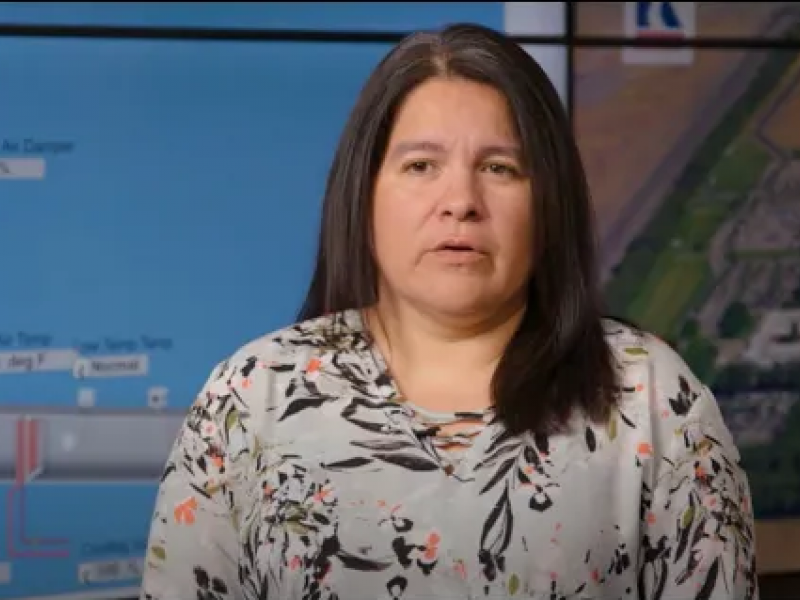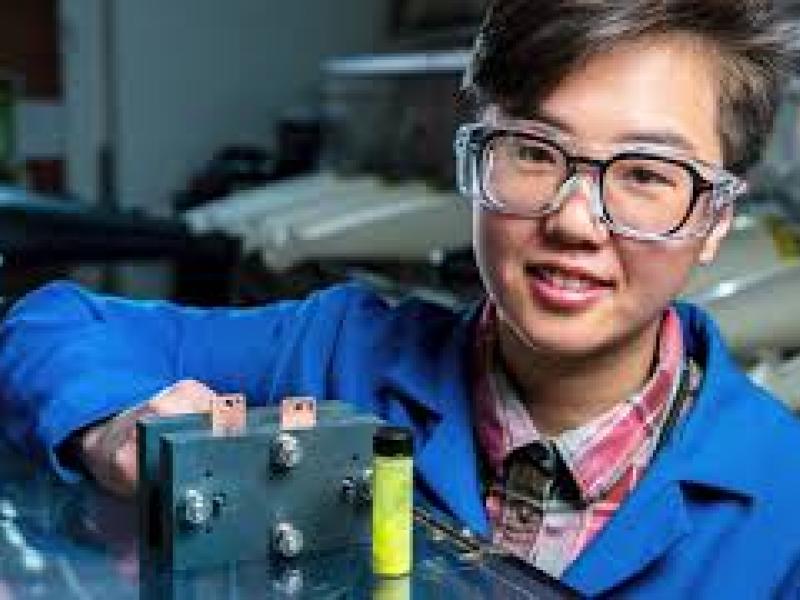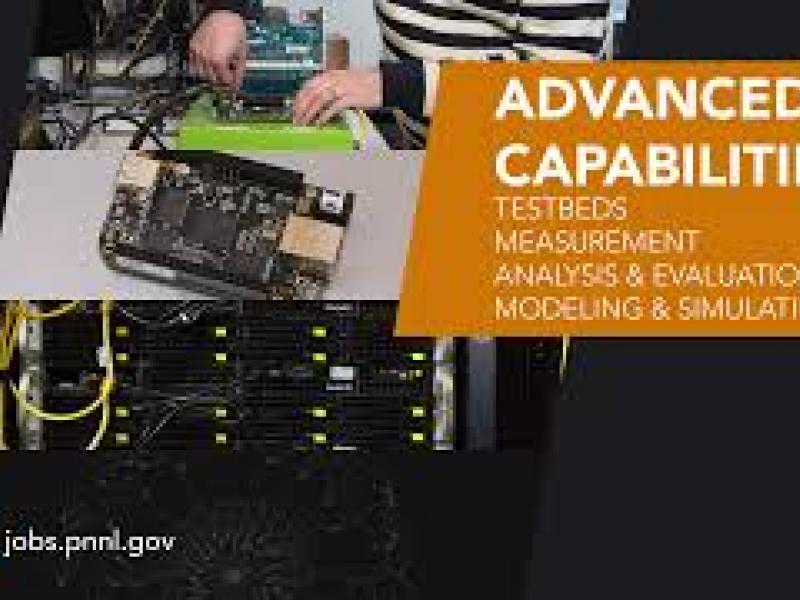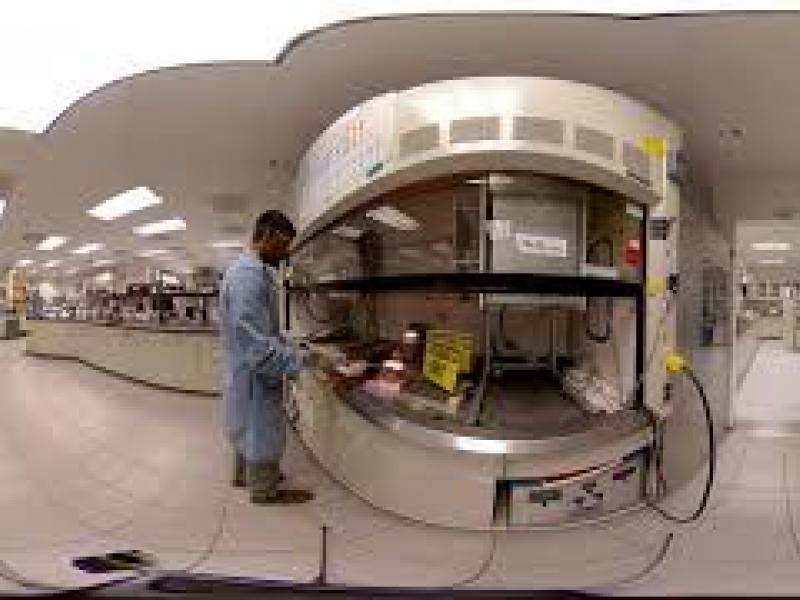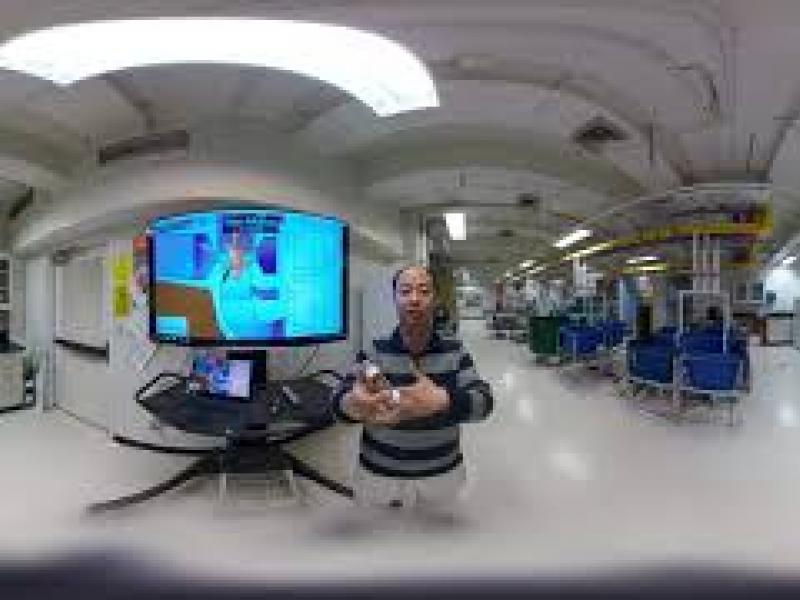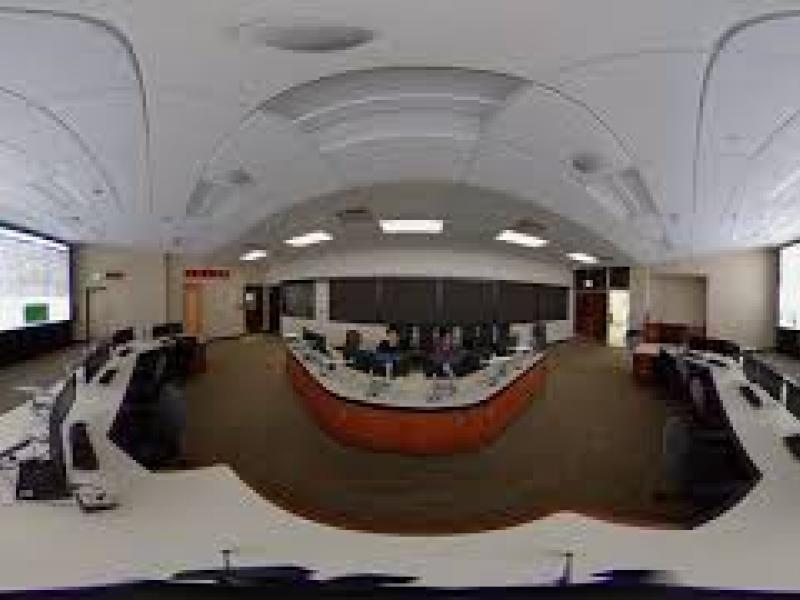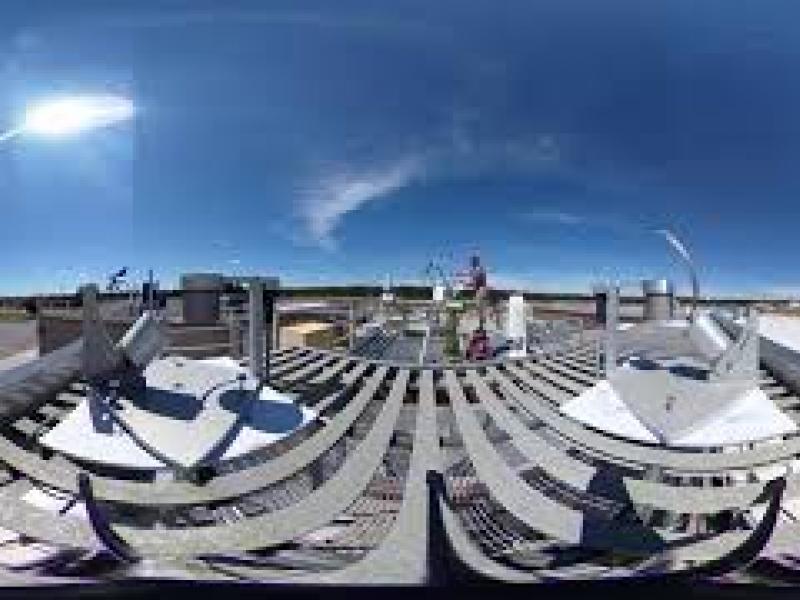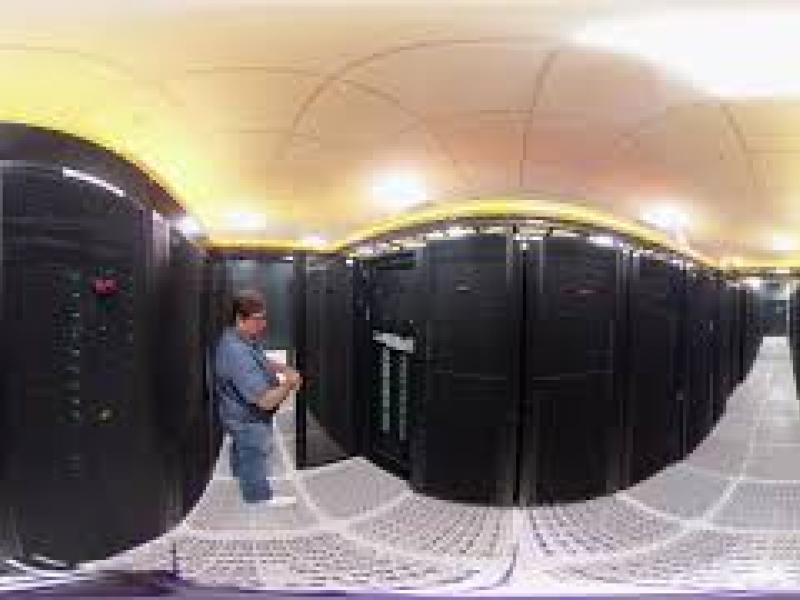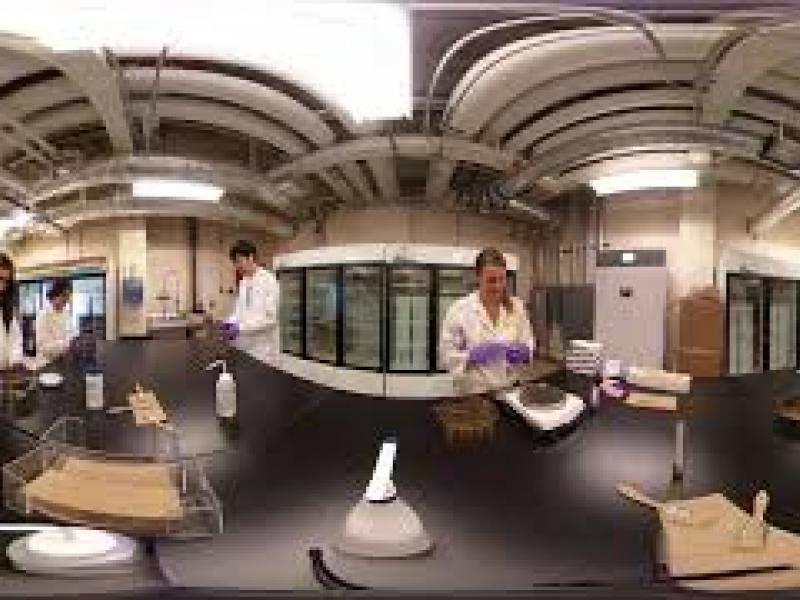
Scientists in PNNL’s Engineering Development Laboratory conduct microwave and millimeter-wave imaging research to develop technologies such as the millimeter-wave shoe scanner for airport security.
Forty feet underground in PNNL’s Shallow Underground Laboratory, scientists build highly sensitive radiation detectors to meet international security challenges, research the universe, and answer questions about our environment.
As one of two DOE Hazard Category II non-reactor nuclear research facilities, PNNL’s Radiochemical Processing Laboratory has been assisting the nation with critical mission needs in nuclear science and radiological research since 1953.
Pacific Northwest National Laboratory’s (PNNL) Building Operations Control Center is referred to as the brain of PNNL's campus operations—a portal for people to connect to intelligent infrastructure from the smart grid, down to buildings, systems, and components.
Pacific Northwest National Laboratory’s (PNNL) Building Operations Control Center is referred to as the brain of PNNL's campus operations—a portal for people to connect to intelligent infrastructure from the smart grid, down to buildings, systems, and components.
PNNL is at the forefront in the search for better batteries, with deep expertise in cutting-edge materials science and a thorough understanding of the requirements of end use applications – from the grid to electric vehicles – enabling us to combine new materials in new configurations to build better batteries that can meet and exceed the user’s performance requirements.
Scientists at PNNL use advanced instruments and computation to conduct studies that provide insights into the atomic level details of chemical conversions and materials for energy storage. This fundamental science has led to better understanding of batteries and catalysts, among other things.
PNNL scientist John Shilling explains how gases convert to particles because of oxidation in the atmosphere and why this research is important to understanding global climate change.
Microbes are exquisite chemists that catalyze thousands of reactions happening in nature. Learning to harness these processes is vital to building a sustainable economy, environmental security, and energy independence.
PNNL is shaping the future of HPC systems everywhere as a proving ground for advanced technologies.
The Advanced Wireless Communications Lab allows PNNL researchers to explore how 5G can transform diverse mission areas, including port and border security, grid infrastructure engagement, and augmented human-machine teaming capabilities for first responders.
In this lab, researchers assemble experimental batteries.
The environmental chamber in this scanning electron microscope shows researchers the growth of atmospheric ice particles, little specs that give birth to clouds.
Researchers collect samples from the Columbia River in Washington and the ground underneath it to study the biological, geological, and chemical processes that determine its health.
As environments change, so do populations of millions of microbes that live in the soil. Researchers extract DNA from samples to understand this change—like a census for soil.
In this lab, researchers can turn liquid nuclear waste into glass as an easy and safe solution for long-term storage nuclear waste.
Laboratory Fellow Daniel Deng describes Sensor Fish, an autonomous device that records physical stressors that fish experience when they pass through a hydropower dam.
Technology developed in this mock control center can help defend the grid from cyberattacks and integrate renewable and smart-grid technology.
Through rain, snow, and sunshine, researchers measure the Earth’s atmosphere at stations like this to understand how airborne particles from pollution, wildfires, and other sources impact our climate.
Researchers use computers like this to analyze massive amounts of data, conduct experiments, and simulate the world around us.
Soil breathes. Or more precisely, the millions of microbes living in the soil do. In this process, they exhale carbon dioxide and nourish the ground. Researchers sift samples of soil to prepare them for analysis.


